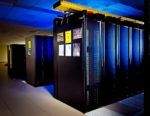I’m a mainframe guy. Cut my teeth writing COBOL, PL/I and FORTRAN on the IBM System/370. CICS is my friend. Was playing with virtual machines long, long before there was anything called “DOS” or Windows” or “Linux.” My office closet is filled with punch cards and old nine-track tapes, all probably unreadable today. One of the happiest days of my professional life was trading in an old TeleVideo 925 monochrome terminal for a brand-new 3279 color display.
If you listen to just about any marketer in the software development or IT industry, mainframes are always described as legacy systems, with the implication that only a total loser would continue to use such an outdated piece of junk.
By casually repeating terms like “legacy system,” or buying into the phrase “legacy modernization” for projects that integrate mainframes with other platforms like Java and .NET, everyone perpetuates the marketing myth that mainframes are bad. That they’re relics whose time has come and gone. That the goal of any IT professional should be to replace every mainframe with something else—anything else.
I say, “Bah, humbug. Nonsense. Fiddlesticks. Balderdash.”
The Wikipedia defines a legacy system as
…an old method, technology, computer system, or application program that continues to be used, typically because it still functions for the users’ needs, even though newer technology or more efficient methods of performing a task are now available. A legacy system may include procedures or terminology which are no longer relevant in the current context, and may hinder or confuse understanding of the methods or technologies used.
In many situations, there is no more efficient tool for solving a business problem than a mainframe. Mainframes are just as current, just as new, just as relevant and just as useful as any other modern, state-of-the-art IT platform. Mainframes are not legacy systems.
Now, are some mainframe applications legacies? Yes. Any application that hasn’t been properly maintained becomes obsolete. If you’re having to do extensive wrappering around an old COBOL or RPG program that nobody understands in order to keep it running, then you’ve got a problem. But the problem isn’t that it’s running on a mainframe. The problem is that the software wasn’t properly documented and your engineers weren’t properly trained.
A 30-year-old undocumented C# program running on .NET, or a 30-year-old undocumented C++ program running on Solaris, or a 30-year-old undocumented Java program running on WebLogic will be just as “legacy” as a 30-year-old CICS program running on z/OS.
Last week, IBM released a new family of mainframes, called the zEnterprise 196. I don’t know much about it—I haven’t touched a mainframe since the early 1980s. But I do know one thing: It’s not a legacy system.
Alan Zeichick is editorial director of SD Times. Follow him on Twitter at twitter.com/zeichick. Read his blog at ztrek.blogspot.com.






